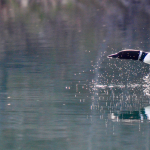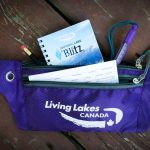Braiding Indigenous Knowledge & Western Science: Groundbreaking approach applies both worldviews to lake management
The environmental sector is often monopolized by Western science, a human-centered worldview defined by the collection and analysis of data.
But this is just one lens through which to see and understand the world around us. Indigenous worldviews are diverse across nations and cultures. They’re interconnected with the timxʷ (people, animals, plants, air and water). In addressing climate change and water security, both worldviews must be present, heard and understood in policy and decision making.
Developed in partnership by Living Lakes Canada and the Upper Nicola Band with the support of the University of British Columbia’s Sustainability Scholars Program, the recently released Local Indigenous Knowledge and Values Framework report innovatively instructs ways of harmonizing Indigenous Knowledge and Western science to support ground-up change for climate resilient lake management.
Rooted in the concept of Two-Eyed Seeing developed by Mi’kmaw Elder Albert Marshall¹ the Framework will create opportunities for both lenses to be applied to a lake survey project. Using an updated Foreshore Integrated Management Planning process (FIMP), this project will map and assess the foreshore habitat value of Nicola Lake to support freshwater biodiversity, improve inclusive lake management and guide foreshore development policies.
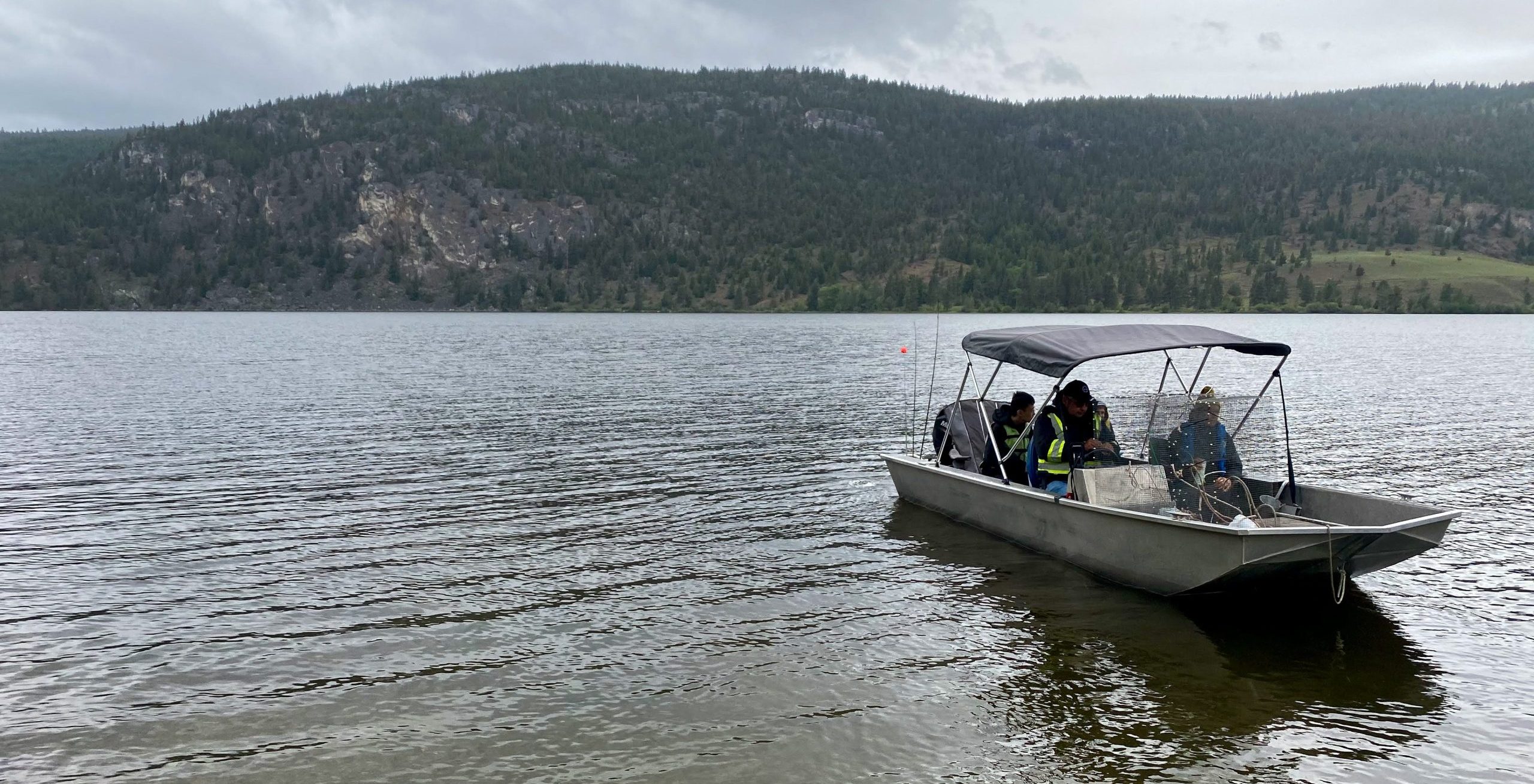
Situated in the Thompson River basin of south-central B.C. and on the land of the Upper Nicola Band of the Syilx Okanagan Nation, Nicola Lake was initially subject to a FIMP survey in 2009/10.
This summer, the Local Indigenous Knowledge and Values Framework will be applied for the first time to a FIMP re-survey of Nicola Lake. It will prioritize archeological and cultural values alongside ecological values to gain a more holistic environmental understanding and generate more inclusive Foreshore Development Guidelines for the protection of the lake.
The precedent-setting methodology developed in this Framework allows for inclusive and respectful collaboration between Indigenous and Western science partners. From the project’s development through to the FIMP application, intentional and consistent relationship building over time has been, and will continue to be, pivotal in building trust between partners. In addition to “respectful relationships”, the Framework’s overarching principles of “place-based approaches”, “reciprocity” and “adaptability” will guide the braiding of both worldviews.
“From a traditional perspective, the relationship piece is key. Teachings say that how we treat each other affects how we treat the land,” said Brian Holmes, Upper Nicola Band Councillor and co-author of the Framework. “If we don’t have a good relationship with each other, the land and water will suffer. We all need to learn to work together and treat each other as family.”
The Sylix Okanagan Nation’s foundational captíkʷł (oral stories) of the Four Food Chiefs form this Framework’s backbone. This oral story describes how food was made available to people from each of the Chiefs: land (Black Bear – Skemxist), water (King Salmon – N’tyx̌tix̌), underground (Bitter Root – Sp̓ iƛ̓ m̓ ) and plants (Saskatoon Berry – Siyáʔ).
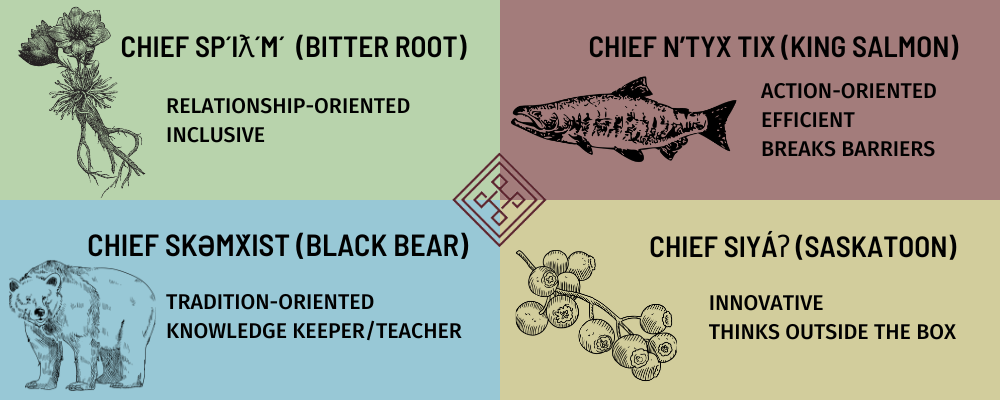
The Four Food Chiefs are aligned with each of the seven project phases that comprise the Framework’s Action Plan. Each phase benefits from varying degrees of each Chief’s ethos. For example, Chief Siyáʔ is particularly essential for the assessment and analysis phases as creativity and innovation are needed to overcome the barriers of interweaving worldviews. Chief N’tyx̌tix̌ is then able to follow with action to implement.
“The intent behind a Local Indigenous Knowledge and Values Framework is to create continuous and lasting relationships with Indigenous partners. This will ensure both Indigenous Knowledge and Western science perspectives are meaningfully considered in foreshore planning and overall watershed protection,” said Georgia Peck, who coordinates the FIMP project as Living Lakes Canada’s Lakes Program Manager. “We’re excited to begin the lake survey process since a key aim of this collaborative project was a tangible application of the framework.”
As a living document, the Framework may evolve over time as learnings are distilled from its application. Although developed within the specific context of the Nicola Lake FIMP re-survey, the intent behind this Framework is applicable in many other contexts. Other Indigenous communities have their own cultural protocols, but the process of developing a place-based Framework for interweaving Indigenous worldviews with Western protocols is what can act as a model for other communities.
“Nicola Lake is changing. We need to put measures in place that are more rigorous than what’s in place now, and hopefully we can do this with the Indigenous piece alongside the Western science through the Framework,” said Brian. “We can always do more with Indigenous inclusion, partnerships and perspectives.”
This project was made possible with generous funding from the Real Estate Foundation of British Columbia and the Fish & Wildlife Compensation Program.
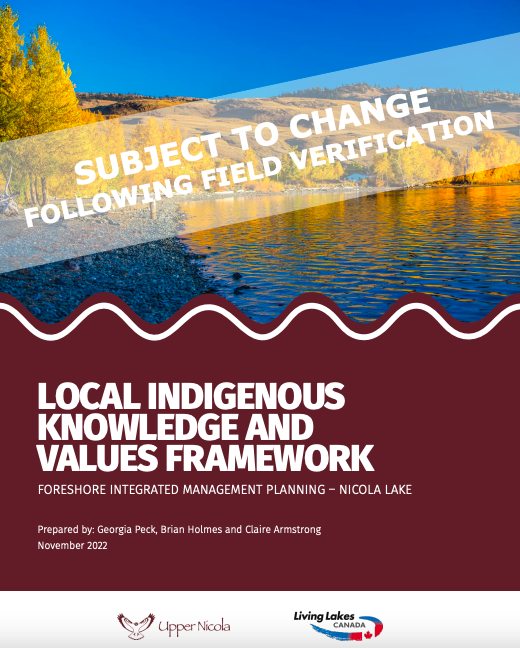
Applied Reconciliation refers to all of Living Lakes Canada’s efforts to decolonize our relationship with water.
Your donation to our Applied Reconciliation Program will support water monitoring work aligned with Indigenous values
to support holistic and sustainable watershed management.





